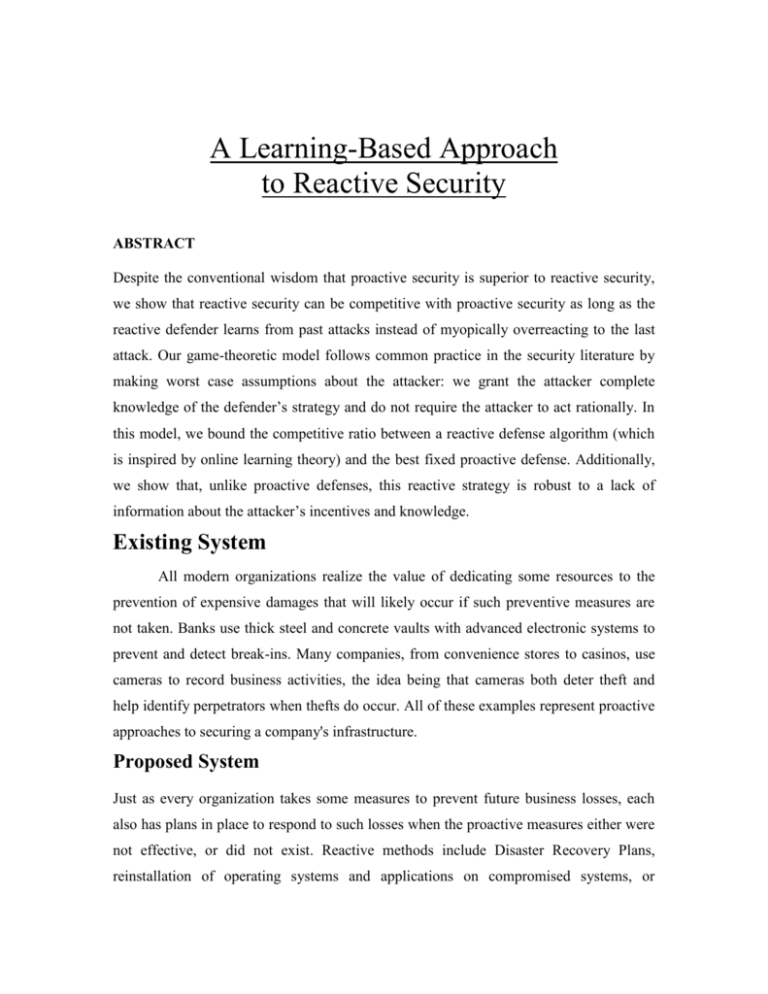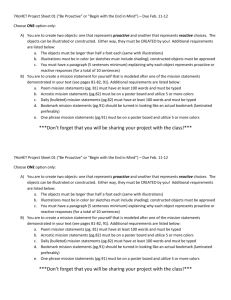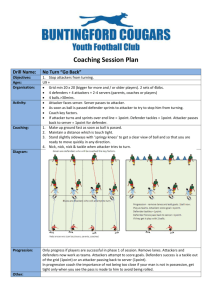A Learning-Based App..
advertisement

A Learning-Based Approach to Reactive Security ABSTRACT Despite the conventional wisdom that proactive security is superior to reactive security, we show that reactive security can be competitive with proactive security as long as the reactive defender learns from past attacks instead of myopically overreacting to the last attack. Our game-theoretic model follows common practice in the security literature by making worst case assumptions about the attacker: we grant the attacker complete knowledge of the defender’s strategy and do not require the attacker to act rationally. In this model, we bound the competitive ratio between a reactive defense algorithm (which is inspired by online learning theory) and the best fixed proactive defense. Additionally, we show that, unlike proactive defenses, this reactive strategy is robust to a lack of information about the attacker’s incentives and knowledge. Existing System All modern organizations realize the value of dedicating some resources to the prevention of expensive damages that will likely occur if such preventive measures are not taken. Banks use thick steel and concrete vaults with advanced electronic systems to prevent and detect break-ins. Many companies, from convenience stores to casinos, use cameras to record business activities, the idea being that cameras both deter theft and help identify perpetrators when thefts do occur. All of these examples represent proactive approaches to securing a company's infrastructure. Proposed System Just as every organization takes some measures to prevent future business losses, each also has plans in place to respond to such losses when the proactive measures either were not effective, or did not exist. Reactive methods include Disaster Recovery Plans, reinstallation of operating systems and applications on compromised systems, or switching to alternate systems in other locations. Having an appropriate set of reactive responses prepared and ready to implement is just as important as having proactive measures in place. A difficult set of decisions needs to be made in deciding how many resources (time, money, and people) to dedicate to proactive approaches and how much too reactive approaches. MODULES: 1. Cross site Scripting 2. 3. Game theory Reactive Security Modules Description 1. Cross site Scripting A vertex might represent whether a particular machine in a network has been compromised by an attacker. An edge from one machine to another might represent that an attacker who has compromised the first machine might be able to compromise the second machine because the two are connected by a network. 2. Game Theory We model a system using a directed graph, which defines the game between an attacker and a defender. Each vertex in the graph represents a state of the system .Each edge represents a state transition the attacker can induce. 3. Reactive Security We grant the attacker complete knowledge of the defender’s strategy and do not require the attacker to act rationally. Further, we make conservative assumptions about the reactive defender’s knowledge and do not assume the defender knows all the vulnerabilities in the system or the attacker’s incentives. However, we do assume that the defender can observe the attacker’s past actions, for example, via an intrusion detection system or user metrics. System Configuration:H/W System Configuration:Processor Pentium –III - Speed - 1.1 Ghz RAM - 256 MB (min) Hard Disk - 20 GB Floppy Drive - 1.44 MB Key Board - Standard Windows Keyboard Mouse - Two or Three Button Mouse Monitor - SVGA S/W System Configuration: Operating System :Windows95/98/2000/XP Application Server : Tomcat5.0/6.X Front End : HTML, Java, Jsp Scripts Server side Script Database : Mysql Database Connectivity : JDBC. : JavaScript. : Java Server Pages. CONCLUSION Many security experts equate reactive security with myopic bug-chasing and ignore principled reactive strategies when they recommend adopting a proactive approach to risk management. In this paper, we establish sufficient conditions for a learning-based reactive strategy to be competitive with the best fixed proactive defense. Additionally, we show that reactive defenders can outperform proactive defenders when the proactive defender defends against attacks that never actually occur. Although our model is an abstraction of the complex interplay between attackers and defenders, our results support the following practical advice for CISOs making security investments: . Employ monitoring tools that let you detect and analyze attacks against your enterprise. These tools help focus your efforts on thwarting real attacks. . Make your security organization more agile. For example, build a rigorous testing lab that lets you roll out security patches quickly once you detect that attackers are exploiting these vulnerabilities. . When determining how to expend your security budget, avoid overreacting to the most recent attack. Instead, consider all previous attacks, but discount the importance of past attacks exponentially.








